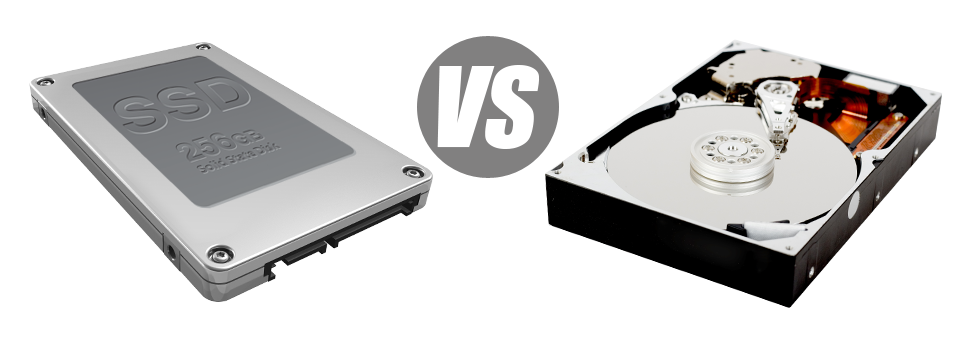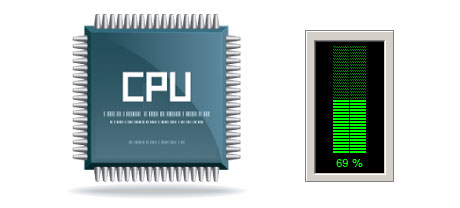For years there seemed to be just one reputable path to store info on a pc – employing a hard drive (HDD). However, this kind of technology is already showing its age – hard disk drives are loud and slow; they are power–ravenous and frequently generate a lot of warmth throughout serious operations.
SSD drives, however, are swift, take in a smaller amount energy and are much cooler. They provide a brand new approach to file access and storage and are years in front of HDDs relating to file read/write speed, I/O performance and then power efficiency. Find out how HDDs stand up up against the more recent SSD drives.
1. Access Time
A result of a revolutionary new approach to disk drive functionality, SSD drives enable for considerably quicker data file accessibility rates. With an SSD, data file access times tend to be lower (just 0.1 millisecond).
HDD drives make use of spinning disks for files storage purposes. Every time a file is being accessed, you have to wait around for the right disk to get to the appropriate place for the laser to reach the data file in question. This results in a common access speed of 5 to 8 milliseconds.
2. Random I/O Performance
Resulting from the brand new significant data file storage approach shared by SSDs, they feature better data access rates and quicker random I/O performance.
For the duration of our tests, all SSDs revealed their ability to work with at least 6000 IO’s per second.
With a HDD drive, the I/O performance steadily increases the more you use the disk drive. However, once it gets to a specific restriction, it can’t proceed quicker. And because of the now–old concept, that I/O restriction is much lower than what you might get with an SSD.
HDD are only able to go as far as 400 IO’s per second.
3. Reliability
The absence of moving components and rotating disks within SSD drives, and also the latest advances in electric interface technology have resulted in a much reliable data storage device, having a normal failure rate of 0.5%.
With an HDD drive to work, it needs to spin a couple of metal hard disks at more than 7200 rpm, holding them magnetically stabilized in mid–air. There is a number of moving parts, motors, magnets as well as other devices jammed in a tiny space. Hence it’s no wonder that the standard rate of failure of an HDD drive ranges between 2% and 5%.
4. Energy Conservation
SSDs are lacking moving elements and require hardly any cooling power. Additionally they require a small amount of electricity to operate – lab tests have revealed that they can be powered by a normal AA battery.
As a whole, SSDs consume somewhere between 2 and 5 watts.
From the time they have been developed, HDDs have been extremely electricity–ravenous products. Then when you have a hosting server with a couple of HDD drives, this will certainly increase the regular monthly electric bill.
Normally, HDDs take in in between 6 and 15 watts.
5. CPU Power
The swifter the data file accessibility rate is, the sooner the data demands will be processed. Therefore the CPU will not have to save assets looking forward to the SSD to answer back.
The common I/O delay for SSD drives is 1%.
When you use an HDD, you’ll have to devote more time awaiting the results of your file ask. Because of this the CPU will remain idle for more time, awaiting the HDD to react.
The average I/O wait for HDD drives is approximately 7%.
6.Input/Output Request Times
The bulk of our brand new machines are now using merely SSD drives. Each of our tests have established that with an SSD, the normal service time for an I/O request although building a backup stays under 20 ms.
All through the exact same lab tests using the same web server, this time around equipped out utilizing HDDs, functionality was substantially sluggish. During the web server data backup procedure, the average service time for I/O requests varied somewhere between 400 and 500 ms.
7. Backup Rates
Discussing back ups and SSDs – we’ve found a significant enhancement with the backup speed since we moved to SSDs. Currently, a common web server back–up requires only 6 hours.
We utilized HDDs exclusively for a couple of years and we have decent expertise in precisely how an HDD performs. Generating a backup for a hosting server furnished with HDD drives will take around 20 to 24 hours.
Our Linux shared website hosting packages accounts offer SSD drives automatically. Join our IT Service Pros Web Hosting family, and find out how we can assist you to transform your web site.
Hepsia
- Live Demo
Service guarantees
- Register today. There aren’t any configuration costs and you’ll have complete SSH/full root access to the server. 99.9% network availability is guaranteed.
Compare our prices
- Simply examine the resources and tools offered by our Virtual Private Servers. Discover which VPS Hosting configuration gives you just what you want to manage your multi–media online presence easily.
- Compare our hosting plans
Contact Us
- It is easy to get in contact with us 24 hours by email or by making use of our extra–fast ticketing system. We provide a 1–hour reply–back time frame warranty.














